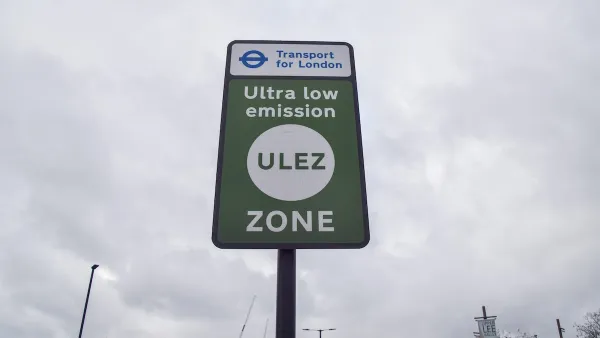According to new research, London's congestion pricing program has improved traffic safety both in the cordoned city center and in the free adjacent areas. Although traffic is moving faster, fatalities have been reduced.
"Research to be presented at the Royal Economic Society’s annual conference later this month found that traffic accidents have fallen in the capital by an astonishing 40% since 2003," writes Jamie Doward of The Guardian. "The work is the first study of its kind and is likely to be examined closely by other cities that have flirted with the idea of imposing a similar charge."
According to the program's website, the daily charge is "£11.50 for driving a vehicle within the charging zone between 07:00 and 18:00, Monday to Friday," which equates to $16.96.
The crash reduction was matched by similar reductions in traffic fatalities and injuries and "extended beyond the congestion charge boundaries into adjacent areas, as fewer people drove through them to reach the centre." The improvement in traffic safety is not self-evident, as "(w)ith fewer cars on the roads in central London, motorists can go faster," notes Doward.
This could have increased the risk of accidents. However, the research team led by Professor Colin Green of the economics department at Lancaster University found that the charge has instead resulted in a substantial reduction in the number of accidents and fewer fatalities.
Bicycling Safety Impacts
There had been concerns that the charge would lead to more people cycling into central London, with a corresponding increase in accidents. The report’s authors found that this was the case initially. Accidents involving cyclists rose at a rate of roughly 1.5 per month until 2005. However, by the end of 2006 this had reversed, and cycling accidents and fatalities fell.
Doward ends the article by asking Professor Green's opinion what the research may say about the city of Manchester "which voted against introducing a charge" in December 2008.
“Would Manchester have seen this effect? My suspicion is yes,” Green said.
FULL STORY: Congestion charge has led to dramatic fall in accidents in London

National Parks Layoffs Will Cause Communities to Lose Billions
Thousands of essential park workers were laid off this week, just before the busy spring break season.

Retro-silient?: America’s First “Eco-burb,” The Woodlands Turns 50
A master-planned community north of Houston offers lessons on green infrastructure and resilient design, but falls short of its founder’s lofty affordability and walkability goals.

Delivering for America Plan Will Downgrade Mail Service in at Least 49.5 Percent of Zip Codes
Republican and Democrat lawmakers criticize the plan for its disproportionate negative impact on rural communities.

Test News Post 1
This is a summary

Test News Headline 46
Test for the image on the front page.

Balancing Bombs and Butterflies: How the National Guard Protects a Rare Species
The National Guard at Fort Indiantown Gap uses GIS technology and land management strategies to balance military training with conservation efforts, ensuring the survival of the rare eastern regal fritillary butterfly.
Urban Design for Planners 1: Software Tools
This six-course series explores essential urban design concepts using open source software and equips planners with the tools they need to participate fully in the urban design process.
Planning for Universal Design
Learn the tools for implementing Universal Design in planning regulations.
EMC Planning Group, Inc.
Planetizen
Planetizen
Mpact (formerly Rail~Volution)
Great Falls Development Authority, Inc.
HUDs Office of Policy Development and Research
NYU Wagner Graduate School of Public Service




























